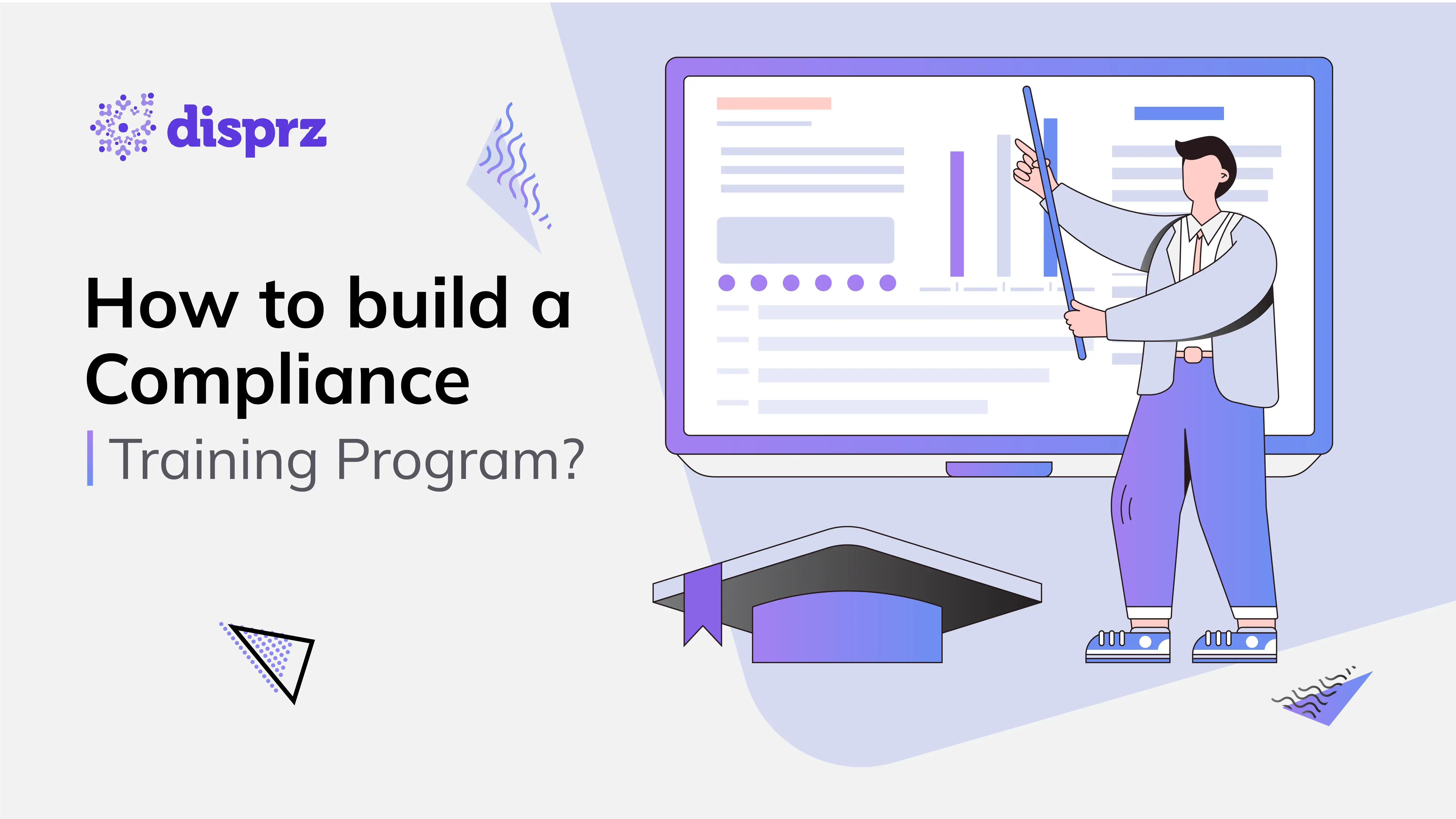Definition and Significance of Compliance Training
In today's business ecosystem, compliance training is crucial for adhering to laws, regulations, and ethical standards. It encompasses legal requirements and internal policies, ensuring operations align with relevant laws to mitigate legal risks, fines, and reputational damage.
Compliance training is crucial for legal adherence, reducing penalties, and promoting workplace safety by minimizing accidents. It protects the company's reputation by fostering ethical behavior and transparency, enhances employee performance with a clear understanding of roles and responsibilities, and mitigates financial risks by preventing costly incidents such as fraud or data breaches.
Best Practices & Strategies of Compliance Training Program
Effective compliance training is vital for safeguarding an organization. Here are the key elements of an exemplary workplace compliance program

Informed management
Effective company communication begins with management and key stakeholders, who must grasp the company's overall goals and objectives. They need to understand how culture and regulations align to achieve these goals. Managing risk, reputation, and potential lawsuits is crucial for business success, making it essential for compliance training to start with management.
Aware of current rules
While it may seem obvious, employees need training on the latest laws and regulations, which are constantly evolving. Regular communication between the legal team and the training team is crucial to ensure employees receive current information, preventing potential compliance issues.
Easily accessible
In today's diverse workforce, employees are often on the move or working remotely. To ensure everyone has access to training, use a learning management system (LMS) solution. The solution streamlines compliance training, making it accessible anytime, anywhere, and offering employees the flexibility they need.
Analyze often
Monitoring the progress of compliance training is essential. Many LMS solutions come with built-in analytics that track who is taking the training, when, and on what device. By comparing this data with other metrics, such as engagement rates, resource performance, assessment results, time logs, and employee performance, you can identify areas for improvement. This information helps refine and enhance your compliance training program.
Need for Compliance training LMS for your Organization
Implementing a compliance training LMS is essential for your organization due to several key reasons, such as
Regulatory adherence
Compliance training ensures that your workforce understands and follows industry regulations and legal requirements, helping to prevent violations that could lead to legal penalties and fines. By training the employees on relevant laws and best practices, the training safeguards the organization from legal repercussions. This proactive approach fosters a culture of compliance, where employees are aware of their responsibilities. Regular and updated training keeps the workforce informed about regulatory changes, ensuring continuous adherence.
Risk mitigation
By educating employees on compliance policies and procedures, you reduce the likelihood of non-compliance incidents, protecting your organization from reputational damage and financial risks. Thorough training ensures employees are aware of the consequences of non-compliance and are equipped to handle potential issues proactively. Additionally, a well-informed workforce can identify and report compliance breaches early, allowing for swift corrective action.
Enhanced employee performance
Effective compliance training improves employees' understanding of their roles and responsibilities, leading to better performance and reduced instances of misconduct or errors. It equips employees with the knowledge to navigate complex regulations confidently, enhancing their decision-making skills. Additionally, this training fosters a sense of accountability and ethical behavior, contributing to a more productive and compliant work environment.
Scalability and Accessibility
An LMS solution allows for scalable and accessible training delivery, catering to a diverse workforce with varying schedules and locations. It enables employees to access training materials anytime and anywhere, ensuring flexibility in learning. Additionally, an LMS can support a wide range of learning formats, from videos to interactive modules, accommodating different learning preferences and enhancing engagement.
Documentation and reporting
Compliance training LMS offers robust features for tracking completion, monitoring progress, and demonstrating regulatory compliance to stakeholders through detailed reports and analytics, facilitating transparent and well-documented compliance efforts.
Steps to Create a Compliance Training Program
Here are the steps to create a compliance training program

Establish written policies and procedures
Establish company policies and procedures, ensuring thorough training for all stakeholders involved in daily operations, including employees, contractors, and agents. Assess existing compliance programs for weaknesses in legal adherence, data integrity, and federal guidelines, enhancing documentation processes accordingly. Simplify documents for readability and applicability across departments, prioritizing clarity and conciseness to ensure effective implementation.
Assigning a compliance team
Establish a dedicated compliance team or department, avoiding common pitfalls like assigning responsibility to sales, marketing, or HR. Designate a compliance leader to oversee operations independently, reducing risk and enhancing organizational efficiency. Additionally, a compliance committee led by departmental leads should be formed to foster employee buy-in and ensure alignment with company-wide compliance objectives.
Create a winning compliance training program
Designing a compliance training program involves structuring content into smaller, focused sessions using the "pull" approach to enhance engagement and learning. Each session should cover specific compliance aspects with relevant examples, regulatory definitions, and practical guides. This method helps employees easily find necessary information, understand the impact of compliance, and apply it effectively in their roles.
Gather insight to evaluate the training effectiveness
To ensure effective compliance training, it's crucial to track results and evaluate the program's impact. Key indicators include the number of non-compliance issues, penalties, employee awareness, and commitment. Gather data through follow-ups, surveys, and interviews to identify areas for improvement and enhance future training.
Build communication channels
Effective corporate communication is essential, especially in compliance training. Develop a detailed rollout document to clarify the purpose and impact of training for all employees. Ensure transparency by informing employees about the training content, its location, and who to contact for assistance or reporting violations. Designate a trustworthy point person for reporting violations to encourage open communication and mitigate fears of retaliation.
Monitor and conduct an audit
As your compliance training progresses, conduct internal audits and monitor employee responses to ensure effectiveness. Regularly review and refine the program, identifying areas for improvement and implementing streamlined solutions to enhance its impact and efficiency.
Create disciplinary guidelines
All employees, including senior management, must grasp the seriousness of compliance issues. Training is essential, but practicing what is taught is equally important. Establish a system to address infractions, providing clear examples and outlining the disciplinary actions that will follow.
Respond quickly to issues
Despite thorough preparation, compliance issues will arise. When they do, implement your plan and assess its effectiveness. Adjust your plan based on the infractions to prevent future occurrences. Investigate and mitigate issues promptly to avoid larger problems. After resolving an issue, create a report detailing the problem, the resolution, and the changes made to prevent recurrence.
Conclusion
Effective compliance training is crucial for protecting a company, requiring informed management, current training on evolving regulations, accessibility through an LMS, and continuous analysis for improvement. Disprz’s compliance training LMS offers scalable and accessible training delivery, ensuring all employees, regardless of location, receive up-to-date compliance training. Its robust documentation and reporting features help track training progress and demonstrate regulatory compliance. By integrating the Disprz platform, your organization can reduce risks, improve employee performance, and maintain a culture of compliance.








